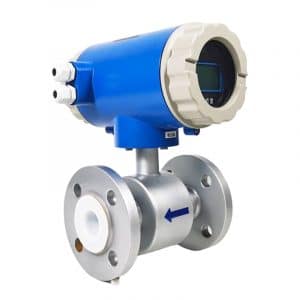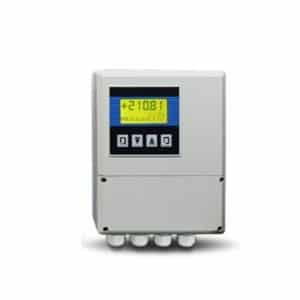There are several types of devices used to measure and control process parameters in fluid transfer systems. Flow meters and flow transmitters are two important devices used in such systems. These two devices are often considered to be identical. Sometimes their functions are interchangeable. In reality, in reality, these devices and their functions are completely different. The next section will discuss flow meters and flow transmitters separately to help you understand their differences.
Flowmeter Introduction
Flow meter is an instrument designed to measure the flow rate of a fluid through a fluid transfer system. It measures the flow rate of a fluid, liquid or gas as it passes through a restricted transmission system. There are different types of flow meters such as electromagnetic flow meters, ultrasonic flow meters, orifice plate flow meters, venturi flow meters, rotameter, flow nozzles, etc. These different flow meters have different operating principles. For example, an orifice flow meter calculates the flow of fluid at the inlet cross-section and outlet cross-section of a narrow restricted opening called an orifice plate. On the other hand, a rotameter type of flow meter is used to measure the volumetric flow rate in multiple pipes placed in different areas of the transmission pipeline.
What is a flow transmitter and how does it work?
A flow transmitter is an upgraded version of a flow meter. It is a flow meter with an integrated electronic circuit as the operating system. In a flow transmitter, the activity of flow measurement is performed by the electronic circuitry upon receiving commands from the operator. Since flow transmitters have electronic circuitry, these devices can be used to control and monitor fluid flow.
Differences between flow meters and flow transmitters
The following are some of the significant differences between flow transmitters and flow meters.
- Flow meters are designed to measure flow rates. On the other hand, flow transmitters not only measure flow, but also help control and monitor it.
- Flow meters are standard mechanical systems such as orifice plates, venturi meters, etc. On the other hand, flow transmitters have a mechanical body and an electronic functional circuit.
- Flow meters are designed for manual field applications, however, flow transmitters can be operated remotely.
Now that you know the difference between a flow transmitter and a flow meter, you can choose the one that is right for you. Of course, flow transmitters help measure, monitor and control flow if your application requires it. However, the quality of the product can have a huge impact on your application, so it’s important that you buy from a trusted manufacturer or supplier, such as Apure Instruments. Apure offers a wide variety of flow transmitters and meters, such as flow transmitters, vortex flow meters, turbine flow meters, Doppler flow meters, open channel flow meters, and more.
Extended reading about flow meter:
Working principle of rotameter
Liquid flow meter
Select the right water flow meter
Relation between flow and pressure


